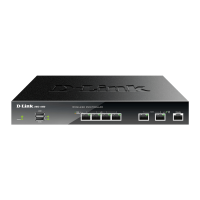Troubleshooting
214
DWC-1000 Wireless Controller User’s Guide
Problems with Date and Time
The DATE AND TIME page shows the current date and time of day. The wireless controller
uses the Network Time Protocol (NTP) to obtain the current time from one of several
network time servers on the Internet. Each entry in the log is stamped with the date and time
of day.
If you find that the date and time stamps are not accurate, confirm that the wireless
controller can reach the Internet.
Discovery Problems with Access Points
If the wireless controller does not discover any or all access points:
• Be sure the wireless controller is connected to the LAN (see “LAN Port LEDs Not ON” on
page 212).
• Be sure you entered the appropriate IP address range if the access points operate in
different VLANs, reside behind an IP subnet, or operate in standalone mode (see “Basic
Configuration Step #1. Enable DHCP Server (Optional)” on page 32).
• If you are using a firewall, unblock the UDP port number for each access port in the
firewall.
• Be sure each access point is using a unique IP address (see “IP Discovery” on page 166).
If more than one access point has the same IP address, only one of them is discovered. In
this case, add the access point to the managed list, change its IP address, and then run
discovery again to discover the next access point with that IP address (see “Basic
Configuration Step #2. Select the Access Points to be Managed” on page 33.
Connection Problems
When an access point is converted from standalone mode to managed mode, its static IP
address changes to an IP address that is issued by the DHCP server, either one in the
network or one that is configured on the wireless controller. This occurs to ensure that each
managed access point has a unique IP address.
If there is no DHCP server or if the access point cannot reach the DHCP server, the access
point remains in the Connecting state as it tries to obtain an IP address. If there is no DHCP
server in the network, configure one on the wireless controller (see “Basic Configuration
Step #1. Enable DHCP Server (Optional)” on page 32). When a DHCP server becomes
available, the access point can transition from the Connecting state to the Connected state.

